Bernardino Lanino, protagonist of the Piedmontese Renaissance. Works in Vercelli and Valsesia.
A center of great artistic production in the Piedmontese Renaissance, especially in the 16th century, is certainly Vercelli, whose main exponent is considered Gaudenzio Ferrari (Valduggia, c. 1477-80 - Milan, 1546), to whom we had already dedicated an itinerary between Valduggia, Vercelli and Varallo on the traces of his most important works that are preserved in the area, starting with the decoration of some chapels of the Sacro Monte of Varallo on which he began work in 1513 and finished in 1528. His great merit is that he succeeded in combining Leonardesque features of Lombard painting and Renaissance influences, yet creating his own personal style. The latter’s best pupil and heir to his art is considered to be Bernardino Lanino (Mortara, 1512 - Vercelli, 1582), who became a major player on the Vercelli scene, thanks to his study and attention to the works of Gaudenzio Ferrari. In a short treatise on the city of Vercelli written by Lorenzo Davidico, Bernardino Lanino is praised as one of the personalities who brought honor to the Piedmontese city in the art of painting with his admirable ingenuity. In particular, it was his early period in which his art was most influenced by the painting of Gaudenzio Ferrari, with whose workshop Lanino became associated from 1530 until Ferrari moved to Milan ten years later, and from that time the principal artist in the Vercelli art scene became Lanino himself, although after the former’s death Bernardino inherited his Milanese commissions. Among the most important works from this period are the frescoes in the Pentecost and Flagellation chapels of Sacro Monte painted between 1543 and 1548, fragments of which are now in the Pinacoteca in Varallo. Bernardino Lanino’s early production can be said to have been mainly oriented toward fresco decoration: examples are theLast Supper preserved in the Borgogna Museum in Vercelli, but coming from the ancient refectory of the church of San Cristoforo in Vercelli, and the San Rocco kept in the same museum, but coming from the oratory of San Rocco in the Vercelli area.
Prior to Gaudenzio Ferrari’s workshop, his beginnings were in any case from Vercelli, and his master was a certain Baldassarre Chodeghis from Abbiategrasso. There are in fact many works by the artist preserved in Valsesia and the Vercelli area, as he was very active there. In addition to the aforementioned detached frescoes of the Pentecost and Flagellation visible at the Pinacoteca civica in Varallo (particularly eventful is the scene representing the Descent of the Holy Spirit in which the characters are depicted in a circle and it is remarkable the skill with which the surprise felt by those present on that occasion is expressed, to which is counterpointed by the serenity of the Madonna with her hands clasped in the center of the composition), the Museo Borgogna holds several works by the artist: TheLast Supper, TheAnnunciation, the so-called Madonna of the Dog and the two small panels depicting angels playing the harp and viola da gamba attributed to him. In theLast Supper, which has been in the Burgundy Museum since 1934, the Gaudenzian influence of the young Lanino is clearly visible, moderating the excited atmosphere through amore measured expressiveness of the apostles; moreover, the glass goblets on the set table are still visible: details that hint at Gaudentius’attention to the everyday . Since the same year, theAnnunciation has also been on public display in the museum: note the frontal position of the announcing angel, usually depicted in profile, who seems to be moving toward the viewer, the twisting of the Virgin, and the dynamism of both figures. The cool tints and the movement of the newly landed angel still showing her swollen robes suggest the artist’s late activity, when he opened up to Mannerism.
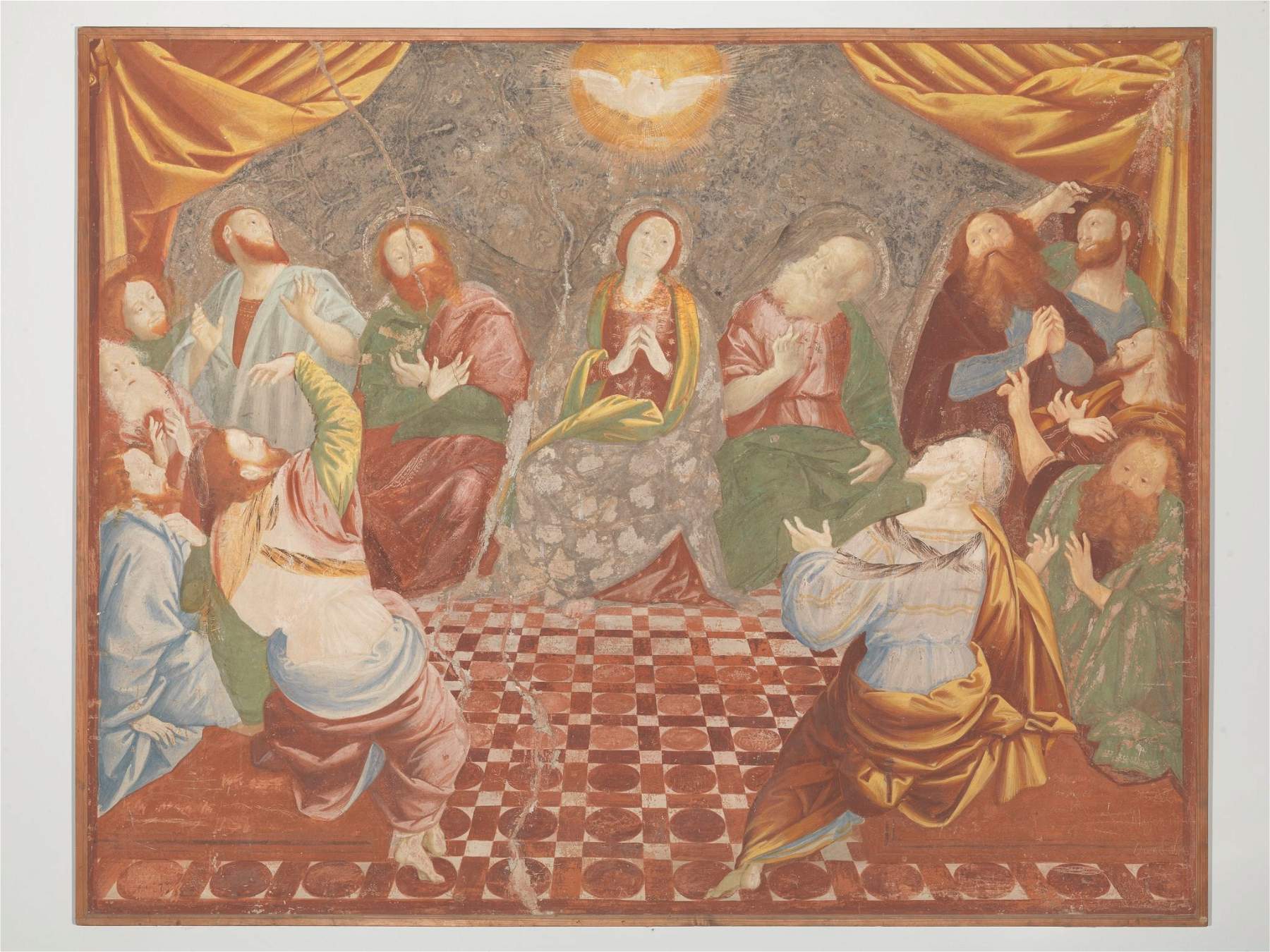
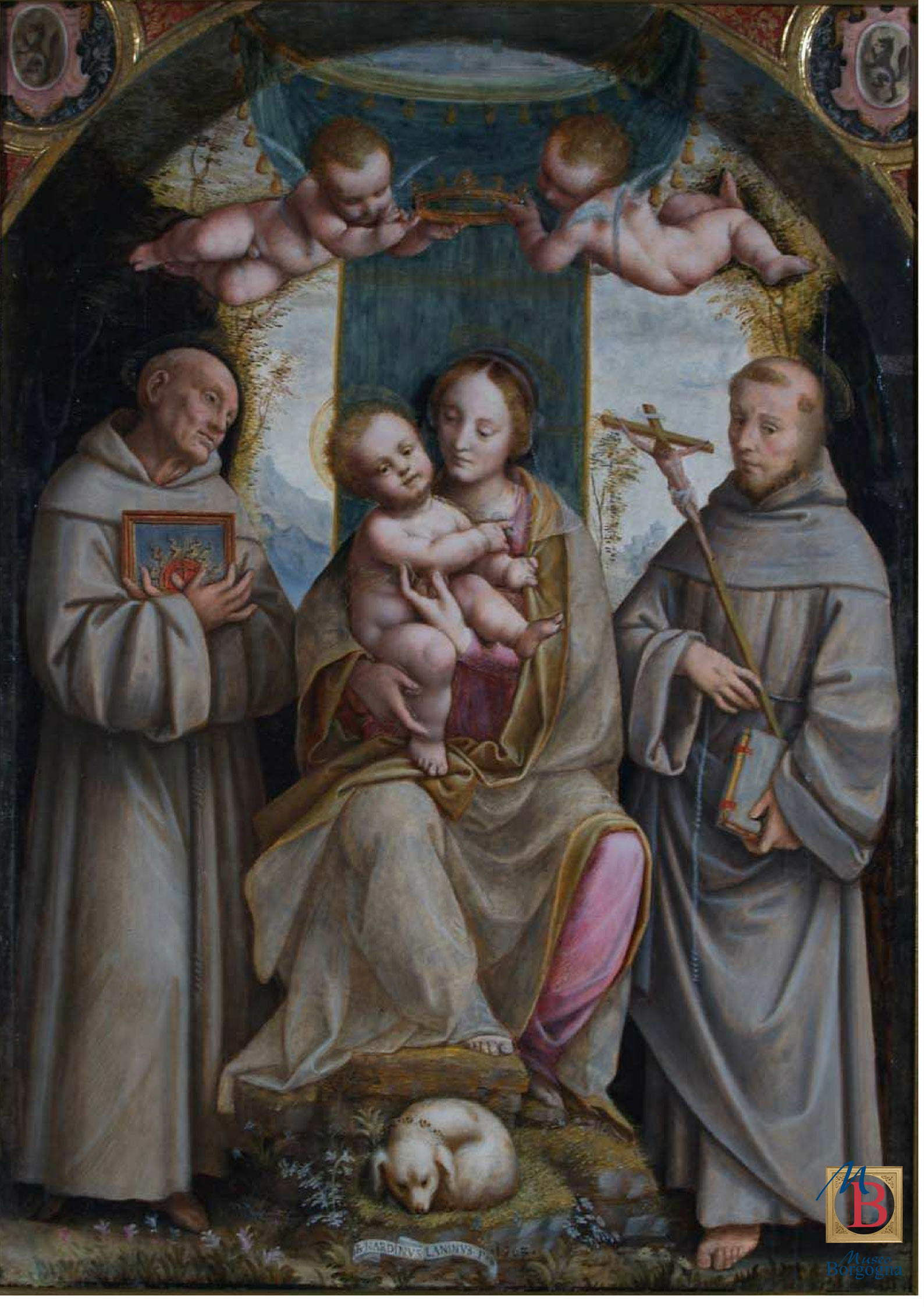 Bernardino
Bernardino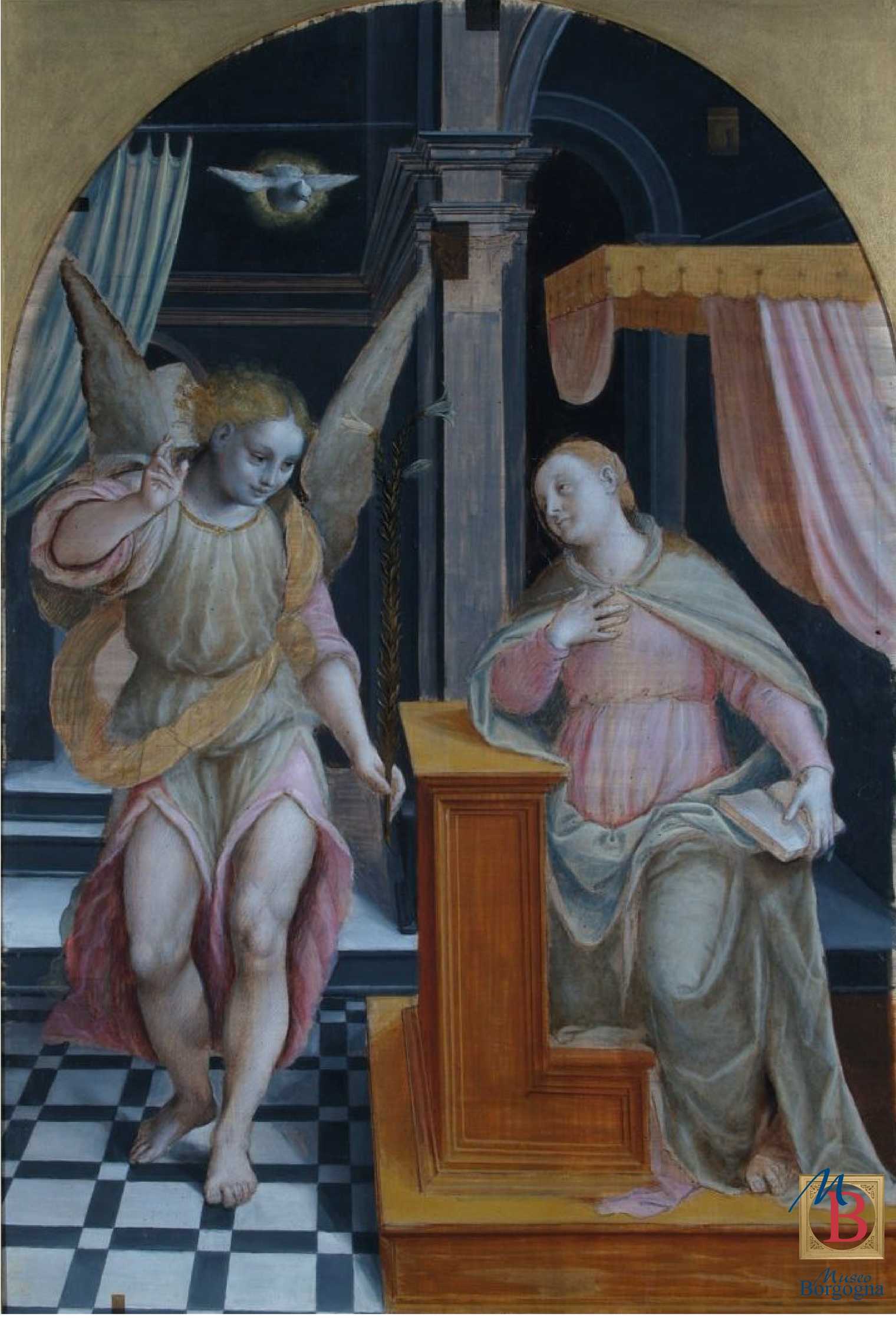 Bernardino Lanino,
Bernardino Lanino,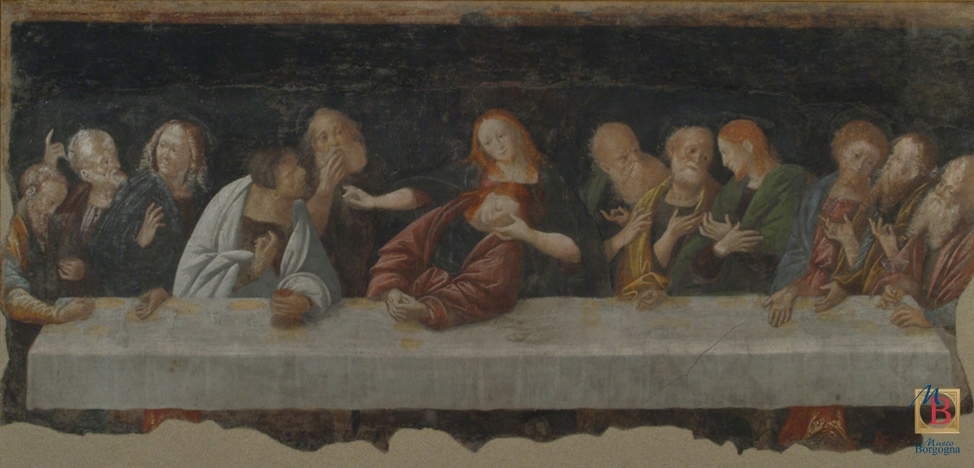 Bernardino Lanino,
Bernardino Lanino,The Madonna of the Dog, depicting the Madonna and Child with Saints Bernardino and Francis, dated 1563, takes its name from the dog with rattlesnake collar crouched at the feet of the Madonna to symbolize marital fidelity; the Virgin is seated on a rock under a canopy with the Child in her arms, and on either side are St. Francis, titular of the church that is now dedicated to St. Agnes in Vercelli, and St. Bernadine, titular of the chapel inside the former church of St. Francis. The work had in fact been commissioned by the Volpe family for their own chapel of St. Bernadine in the church of St. Francis. The two saints are depicted with their own symbols and express devotion and an absorbed detachment in the overall composed setting of the painting. Lastly, the two panels with the musician angels purchased by Antonio Borgogna at the auction of Marquis Mercurino Arborio di Gattinara in Milan in 1899 and at the time attributed to Gaudenzio Ferrari were later included in the corpus of Bernardino Lanino’s works, dating within the 1670s: they are, however, illustrative of the artist’s late maturity, since they are monochrome (already in the Gaudenzian tradition) and with highlights.
In the church of San Paolo in Vercelli is the Madonna of Grace, among the artist’s best-known works. Signed and dated 1568, it had been commissioned from Lanino fifteen years earlier by the City of Vercelli in commemoration of the city’s liberation from the French, who had seized Vercelli, under the command of Marshal Brissac, on the night of November 18-19, 1553. However, the artist delivered the altarpiece of Our Lady of Grace to the Dominicans of San Paolo in 1568. A crowded work with the seated Madonna holding the standing Child in the center, and in the left foreground the figure of St. Paul can be recognized. The scene is completed by three musician angels in the lower foreground and other cherubs holding draperies. On the other hand, it is in the main church of Borgosesia dedicated to Saints Peter and Paul, in the chapel of Saint John the Baptist, that the panel painted by Lanino depicts the enthroned Virgin and Child between Saints Gaudentius bishop, Christopher, Peter and Paul, and John the Baptist all gathered under a frame of purple drapery: the work is stylistically very similar to the altarpiece of the Madonna of the Oranges completed by Gaudentius for the church of Saint Christopher in Vercelli. Note the musician angel at the feet of the Virgin with languid eyes. The panel is also accompanied by the predella with images from the lives of Saints Peter and Paul.
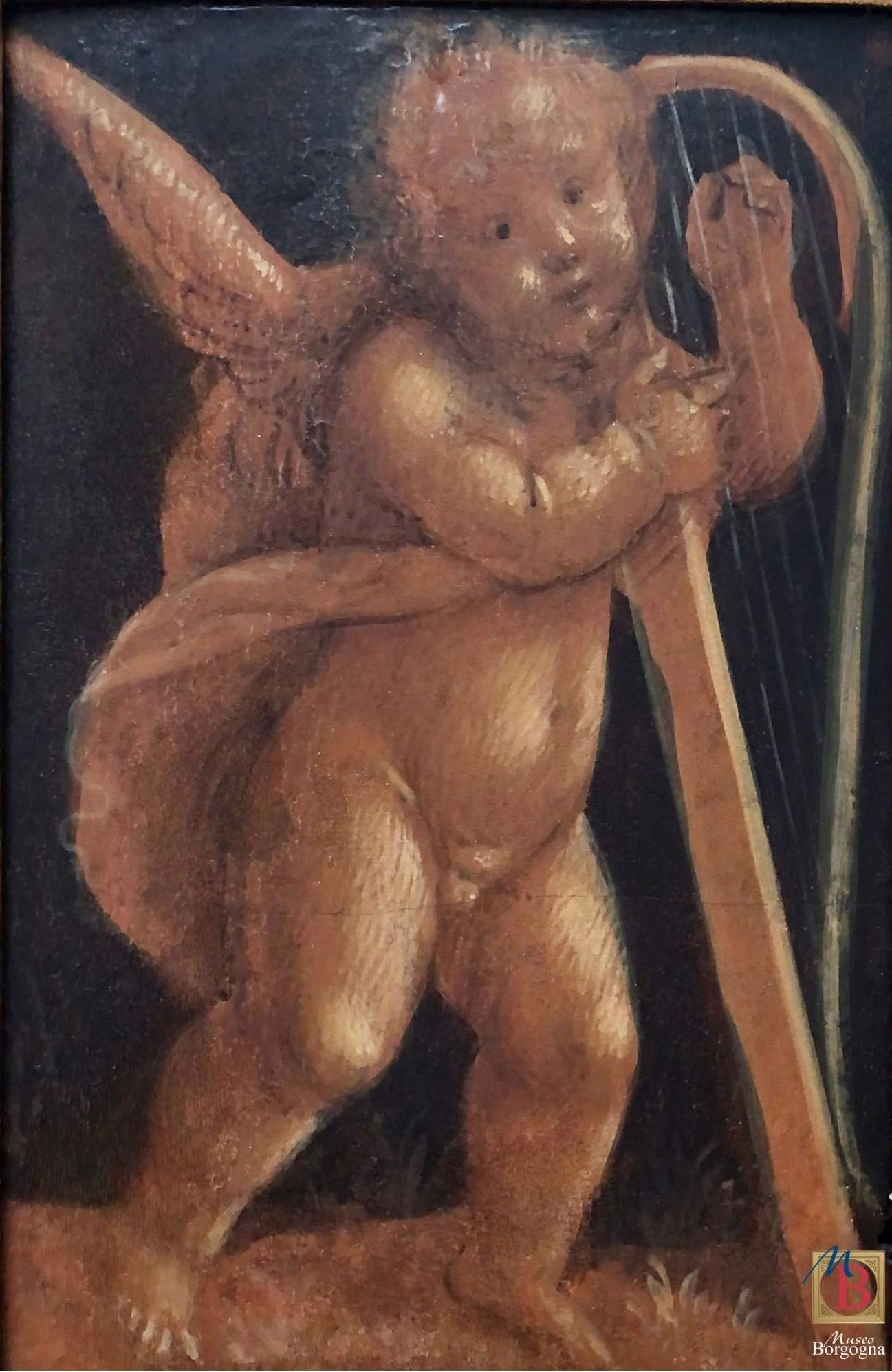
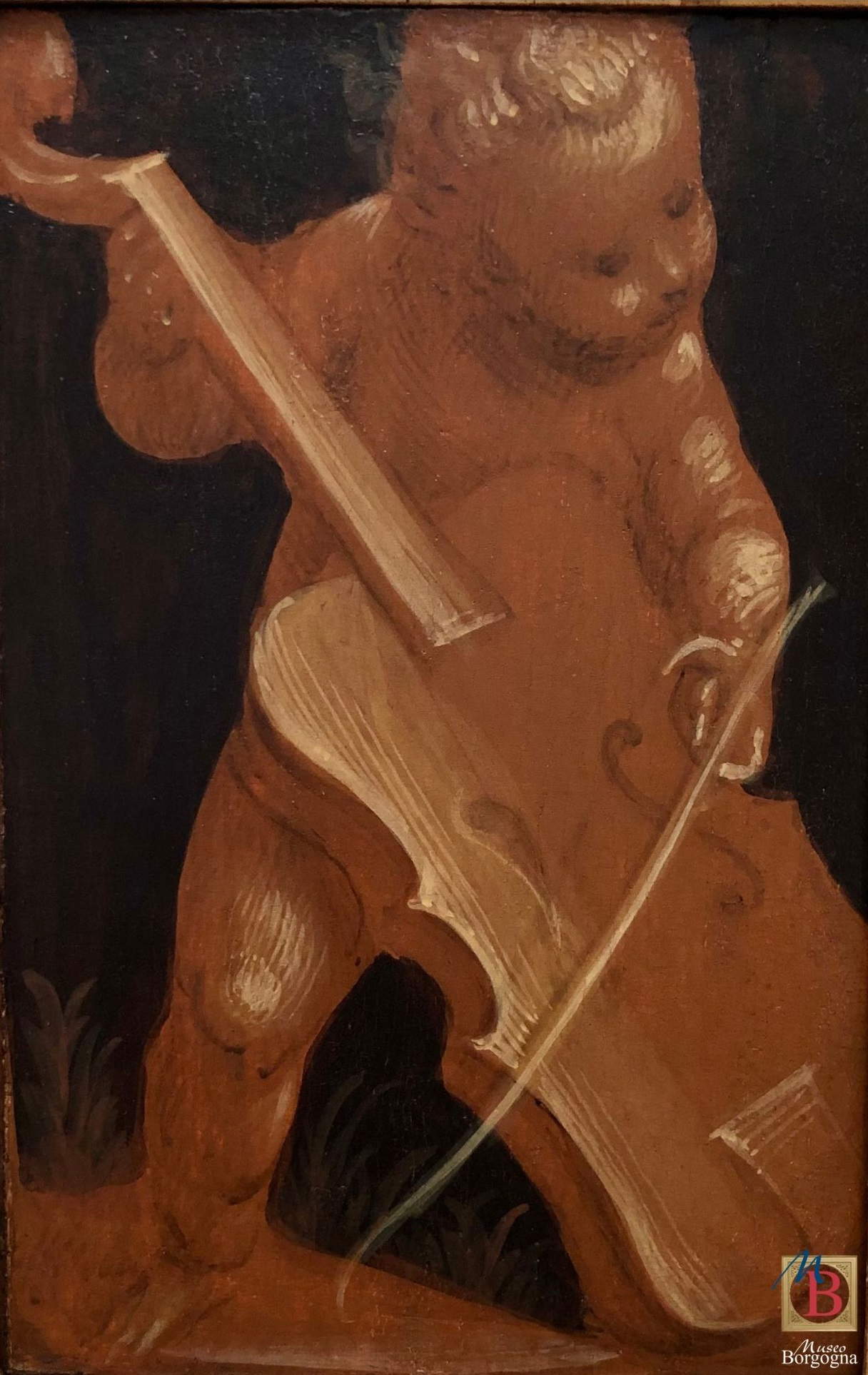 Bernardino Lanino (attr
Bernardino Lanino (attr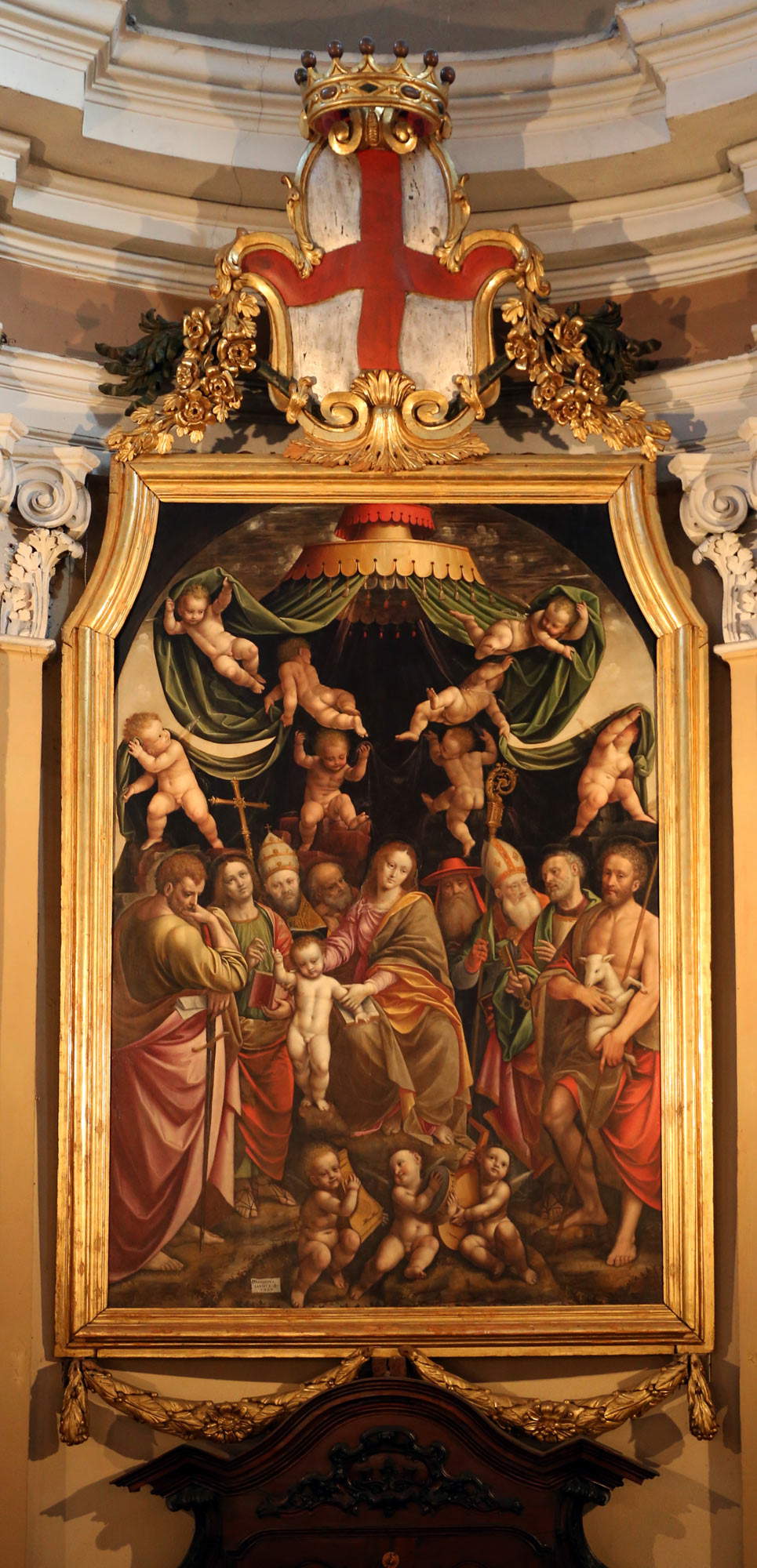 Bernardino
Bernardino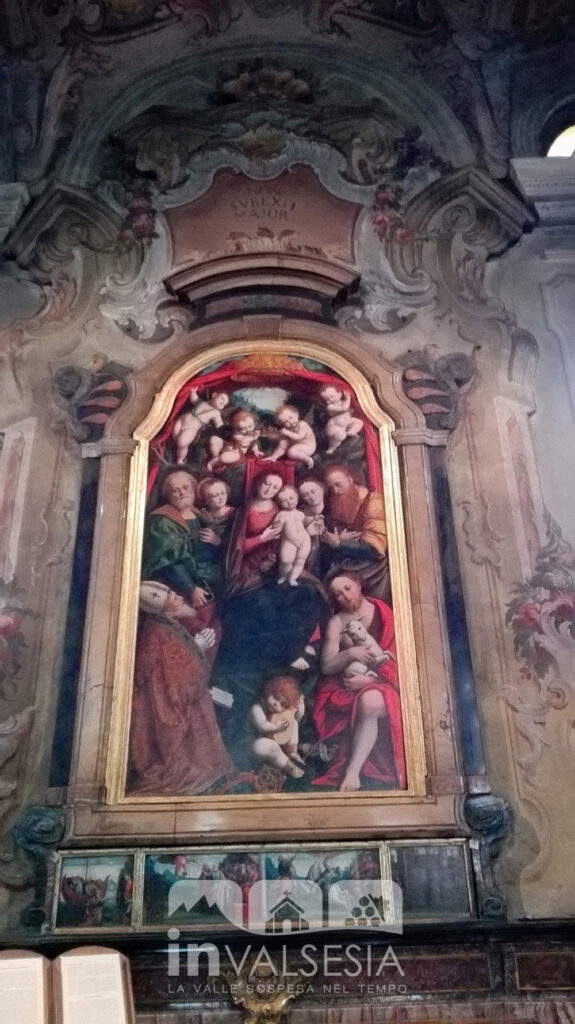
The parish church of San Giorgio in Valduggia preserves a polyptych made by the artist in 1564: starting from the top, God the Father blessing, saints Peter, Paul, Gaudentius, and Lawrence are depicted; lower down, saints John the Baptist, Maurice, and Barbara, while the central panel shows the Virgin Enthroned with Child between angels, Joseph, a bishop saint, and other saints. In the predella, figures of apostles and church fathers.
Other works by Bernardino Lanino can be found in the church of San Giuliano, inside which are frescoes attributed to him and Girolamo Giovenone, and on the high altar is one of his panels from 1547 depicting the Deposition. And again, in the church of San Martino in Roccapietra there are on the altar panels painted by Lanino; in the Archiepiscopal Seminary of Vercelli, in the Hall of St. Eusebius, his frescoes with Scenes from the Aeneid are preserved.
Through these works it is possible to follow an itinerary to discover one of the greatest artists of the Piedmontese school of painting in the 16th century, to understand his role in the Piedmontese Renaissance and in particular in the territories of Valsesia and Vercelli. From the influences of Gaudenzio Ferrari’s art to the achievement of his own style that blossomed into Mannerist elements in his late production.
 |
| Bernardino Lanino, protagonist of the Piedmontese Renaissance. Works in Vercelli and Valsesia. |
Warning: the translation into English of the original Italian article was created using automatic tools. We undertake to review all articles, but we do not guarantee the total absence of inaccuracies in the translation due to the program. You can find the original by clicking on the ITA button. If you find any mistake,please contact us.





























